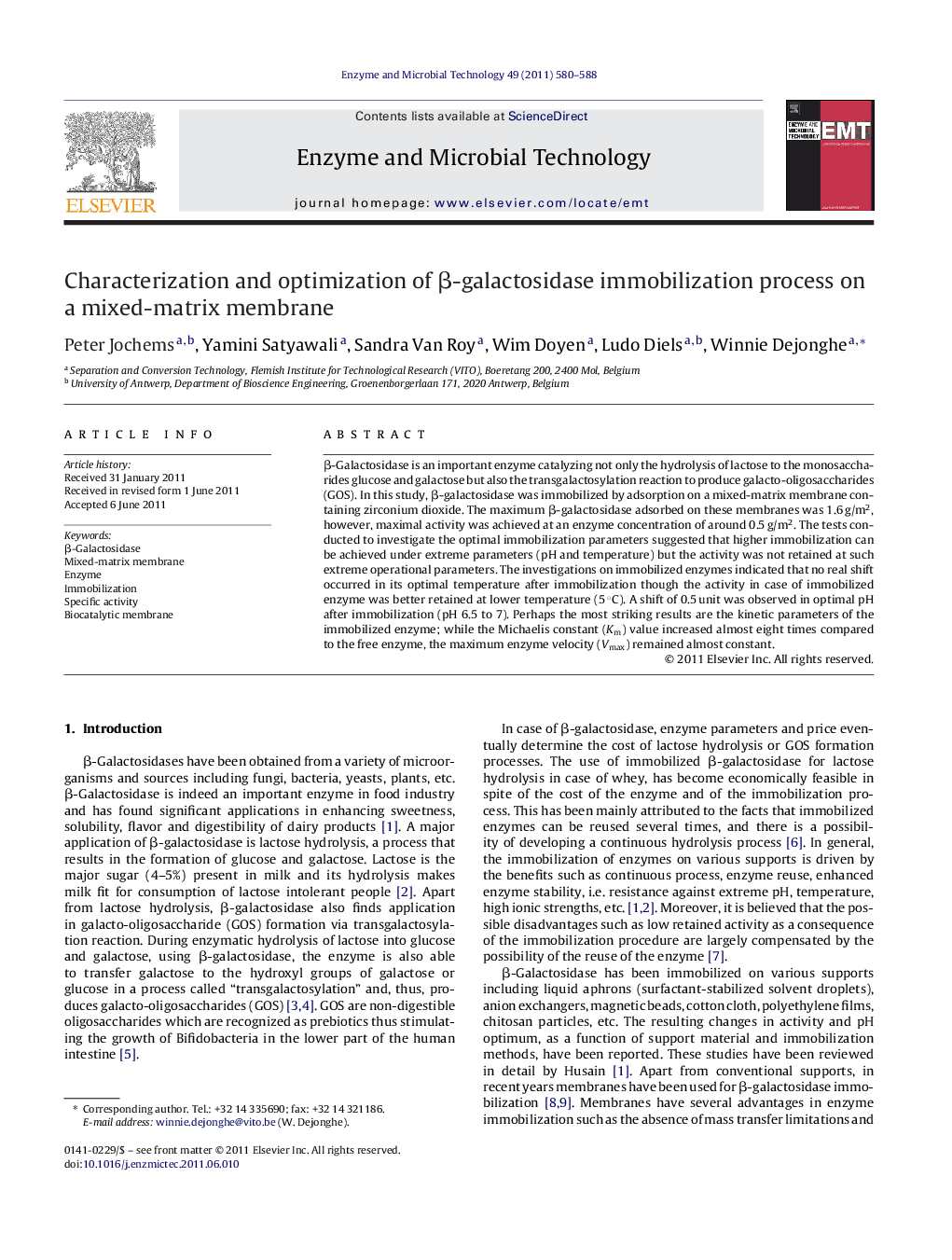| Article ID | Journal | Published Year | Pages | File Type |
|---|---|---|---|---|
| 17335 | Enzyme and Microbial Technology | 2011 | 9 Pages |
β-Galactosidase is an important enzyme catalyzing not only the hydrolysis of lactose to the monosaccharides glucose and galactose but also the transgalactosylation reaction to produce galacto-oligosaccharides (GOS). In this study, β-galactosidase was immobilized by adsorption on a mixed-matrix membrane containing zirconium dioxide. The maximum β-galactosidase adsorbed on these membranes was 1.6 g/m2, however, maximal activity was achieved at an enzyme concentration of around 0.5 g/m2. The tests conducted to investigate the optimal immobilization parameters suggested that higher immobilization can be achieved under extreme parameters (pH and temperature) but the activity was not retained at such extreme operational parameters. The investigations on immobilized enzymes indicated that no real shift occurred in its optimal temperature after immobilization though the activity in case of immobilized enzyme was better retained at lower temperature (5 °C). A shift of 0.5 unit was observed in optimal pH after immobilization (pH 6.5 to 7). Perhaps the most striking results are the kinetic parameters of the immobilized enzyme; while the Michaelis constant (Km) value increased almost eight times compared to the free enzyme, the maximum enzyme velocity (Vmax) remained almost constant.
